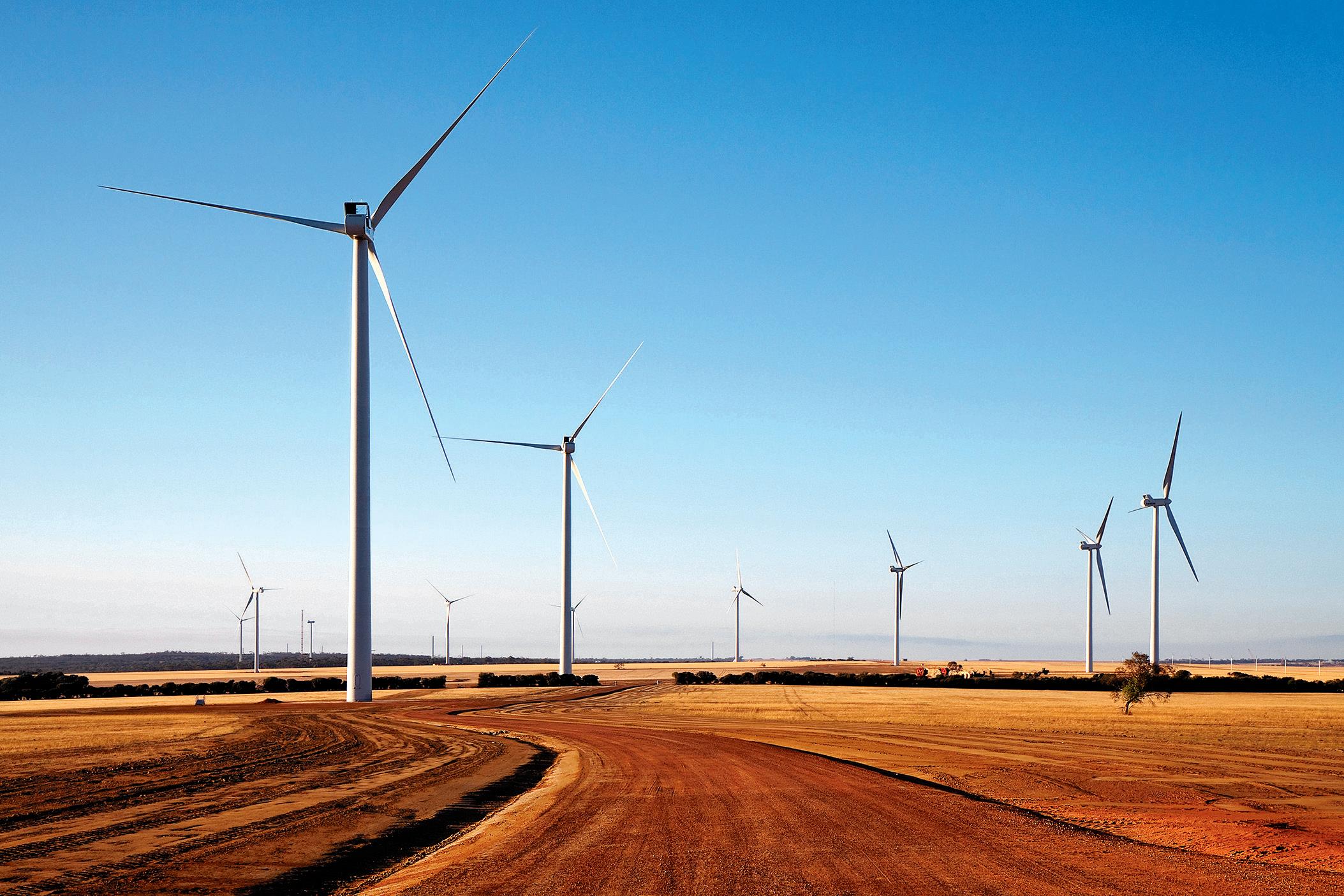
4 minute read
Working with
from 2012-03 Sydney (1)
by Indian Link
BY USHA RAMANUJAM ARVIND

When city-bred Ankit Shah was deputed for a year to an onsite project in remote rural Western Australia, he considered it a godsend.
The alumnus of UNSW School of Civil and Environmental Engineering was thrilled to take on the mantle of site civil engineer for the largest single stage wind farm in the southern hemisphere – Collgar Wind Farm (CWF).

Not only was it an opportunity to diversify his repertoire, the prestigious project enabled the budding structural engineer to gain valuable experience in the much sought after green energy sector.
Renewable energy is certainly the buzzword of this century as global economies grapple with the dire issue of energy security and resource depletion. Many nations, including Australia (albeit belatedly), have already jumped onto the smart energy bandwagon, exploring avenues like wind farming, geothermal, solar and hydro electricity.
Currently electricity production from burning fossil fuels accounts for nearly half of Australia’s greenhouse emissions. As the government implements urgent initiatives to battle climate change, wind energy is fast emerging as the frontrunner in this sunrise industry.
Clean, economical and inexhaustible, it has immense potential in this windswept continent, particularly along the south-eastern and western coastal fringes.
Identified by Windlab Systems and jointly developed by international investment bank UBS and Australian superannuation group REST, Collgar Wind Farm is a $750 million renewable power project. Built on a land envelope of 18,000Ha in the WA wheat heartland and powered by 111 Vesta V90 turbines, the project was completed in October last year and is expected to double the level of renewable energy output from 5 to 9%, according to industry sources.
CWF is equipped to meet the energy needs of at least 125,000 homes by producing an average 792,000 MWh of power annually.
Besides delivering clean sustainable energy, this project will also significantly contribute to reduction of greenhouse gases.
It is believed that the reduced eco footprint is equivalent to “taking 160,000 cars off the road and planting 1,000,000 trees”.
Working for Aurecon, the “owner’s engineer” for the prestigious project, Ankit Shah was stationed at Merredin, a sleepy town with a headcount of less than 1000.
“I was always interested in how things work. But it was clearly Providence that brought me to the energy sector,” Shah who is now back in Sydney, told Indian Link.
“Once in, it was a deliberate move to go towards renewable energy because I strongly believe that it is the place to be. I think most of humankind’s successes this century will come from an efficient use of the limited resources we have,” he added Aurecon’s role was to provide “project management, technical and contractual consultancy services for CWF to ensure a longlife, durable and operational wind farm”.
“My job entailed monitoring and managing the construction of 111 turbine foundations and hardstands, 80 km of access tracks, erection of each of the turbines, construction of the substation; along with other site critical issues like safety, the natural environment and the local community,” Shah explained.
“We used 200,000m³ of soil to make the pavements and hardstands and over 40,000m³ of concrete for the foundations,” he elaborated. “That’s almost 100 Olympic sized swimming pools of soil and concrete – a logistical nightmare! But we got through it with little difficulty,” he added.
From a technical perspective, those in the industry would be particularly interested to know that there were some innovations on this project, Shah noted.
“For example, we used pre-cast sacrificial formwork, which meant we could pour concrete faster and get steel fixers to prepare the reinforcement well ahead of the pour,” he explained.
“Likewise, the dimensions of the turbine were interesting too”, he added. “The tower, once fully erect, reaches a height of approx. 120.
The blades (wings) on the turbine span 40m but weigh only about 4 tonnes and are made of fiberreinforced polymers (FRP). The main tower structure is made of 4 cm thick steel.”
According to Shah, the electricity generated from each turbine is transmitted via underground and above ground cabling to a central cable marshalling point at the onsite substation, which is located next to the 220kV power line that runs through the site area. The substation will then connect directly into the grid network on site.
Besides the immense professional fulfillment, the young engineer, who specialises in infrastructure projects, undoubtedly enjoyed the X factor that working in the bush offers.
“I took the road less travelled –quite literally,” he confessed. “It was fun because during construction we worked amongst snakes, foxes, rabbits, wedge-tailed eagles, wild flowers and paddocks of wheat and canola. I particularly miss the open spaces around Merredin,” he added.
As well, the laid back atmosphere of a hospitable country town has charmed the impressionable youngster. “There are no traffic lights, often people parked on the street with their keys still in the car. I got to know almost everyone in Merredin by the end of my stint,” he reminisced.
It is no doubt then that he misses the warmth and intimacy of a close-knit community where everyone knows each other.
An unexpected bonus was the tete-a-tete with cricketing legend Glenn McGrath who was in the remote town to promote McGrath Foundation’s work in breast cancer. “The Aussie icon is a cool guy, totally relaxed. It was wonderful to get one on one cricket tips,” he quipped.
Having gained considerable insight in the industry, the godfearing engineer is quick to rebuff naysayers, who criticise wind energy for high sound pollution.
“I’ve been inside and next to operational turbines, they emit noise – this is true. But I can tell you that beyond a distance of 200300m, the noise is difficult to pick up even if you focussed on nothing else. Over 1km, there is no noise,” he declared emphatically.
“My experience,” he claimed,









